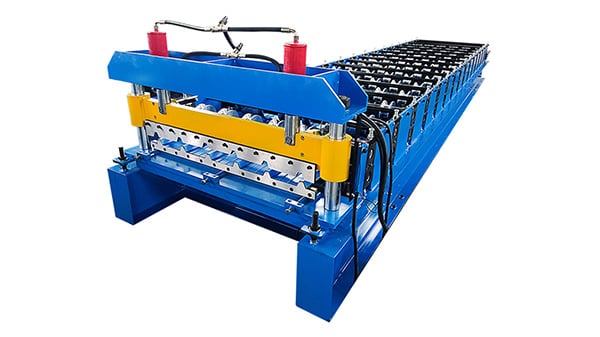Introduction
A roll forming machine is a specialized equipment used in the metalworking industry to shape metal sheets or strips into desired cross-sectional profiles. It is a continuous bending operation in which a long strip of metal is passed through sets of rollers to gradually form the desired shape. Roll forming machines are widely used in various industries, including automotive, construction, aerospace, and manufacturing.
How Does a Roll Forming Machine Work?
A roll forming machine consists of a series of rollers, also known as roll tooling, that gradually shape the metal strip as it passes through. The process starts with an uncoiler, which unwinds the metal strip from a coil and feeds it into the machine. The strip then goes through a series of rollers, each performing a specific bending or shaping operation. The rollers are designed with specific contours that gradually shape the metal into the desired profile.
Advantages of Roll Forming Machines
Roll forming machines offer several advantages over other metal forming methods:
- High Efficiency: Roll forming is a continuous process that allows for high-speed production, making it ideal for large-scale manufacturing.
- Precision and Consistency: Roll forming machines can produce highly accurate and consistent parts, ensuring tight tolerances and uniformity.
- Flexibility: Roll forming machines can produce a wide range of profiles and shapes by simply changing the roll tooling, offering versatility in design options.
- Cost-Effective: Roll forming eliminates the need for multiple separate operations, reducing labor costs and increasing productivity.
- Material Savings: Roll forming minimizes material waste as it utilizes the entire length of the metal strip, resulting in cost savings.
Applications of Roll Forming Machines
Roll forming machines find applications in various industries:
- Construction: Roll formed profiles are commonly used in the construction industry for applications such as roofing, wall cladding, and structural components.
- Automotive: Roll formed parts are used in the automotive industry for components like door frames, window channels, and bumper reinforcements.
- Aerospace: Roll forming is utilized in the aerospace industry for manufacturing aircraft components like fuselage sections, wing stiffeners, and structural parts.
- Electrical: Roll formed profiles are used in electrical enclosures, cable trays, and other electrical applications.
- Manufacturing: Roll forming machines are used in general manufacturing for producing a wide range of profiles and shapes for various applications.
Factors to Consider When Choosing a Roll Forming Machine
When selecting a roll forming machine, several factors need to be taken into account:
- Material: Consider the type and thickness of the material to be formed, as different roll forming machines are designed for specific materials.
- Profile Complexity: Determine the complexity of the profile required and ensure the machine can handle the desired shape.
- Production Volume: Consider the expected production volume to choose a machine with the appropriate speed and capacity.
- Additional Features: Some roll forming machines offer additional features like punching, cutting, or embossing capabilities, which may be required for specific applications.
- Cost and ROI: Evaluate the initial investment cost, maintenance requirements, and expected return on investment to make an informed decision.
Maintenance and Safety Considerations
To ensure optimal performance and safety, regular maintenance of roll forming machines is essential. Some key maintenance considerations include:
- Lubrication: Proper lubrication of the machine's moving parts is crucial to reduce friction and prevent premature wear.
- Inspection: Regular inspection of the machine's components, such as rollers and bearings, helps identify any signs of damage or wear.
- Cleaning: Keeping the machine clean from debris and metal shavings prevents interference with the forming process and reduces the risk of accidents.
- Training and Safety Measures: Operators should receive proper training on using the machine and follow safety protocols to prevent injuries.
Conclusion
Roll forming machines play a crucial role in the metalworking industry, offering a highly efficient and versatile method of shaping metal strips into desired profiles. With their numerous advantages and applications, roll forming machines have become an essential tool for various industries, ranging from construction to automotive and aerospace. Choosing the right machine and ensuring proper maintenance and safety measures are crucial for maximizing productivity and achieving high-quality results.

